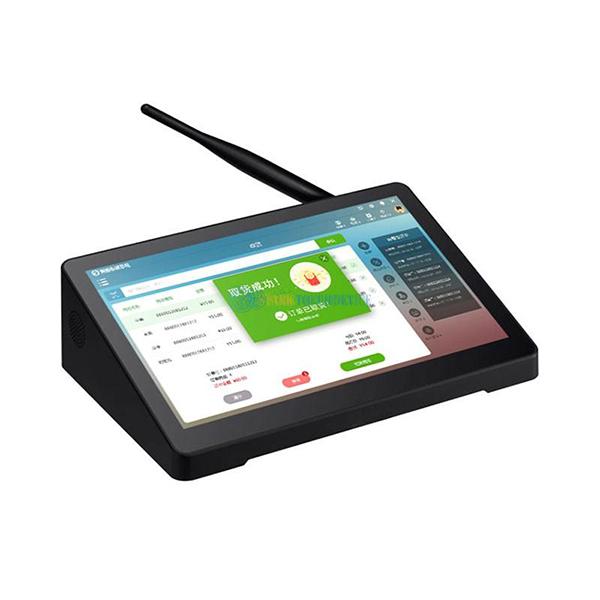Welcome STARK TOUCH DEVICE!
Solutions
Maintenance of data backup strategies for industrial control computers
Industrial Control Computer Data Backup Strategy Maintenance
Industrial control computers (ICCs) handle critical operational data, including configuration settings, process logs, and real-time sensor readings. A robust data backup strategy ensures business continuity, protects against hardware failures, and supports disaster recovery in industrial environments.

Defining Backup Scope and Priorities
Not all data on an ICC requires the same backup frequency or retention policy. Focus on mission-critical information.
Critical Data Identification
Start by categorizing data based on its impact on operations:
Operational Configurations: PLC programming files, HMI layouts, and network settings. Loss here can halt production lines.
Process Logs: Historical data from sensors, actuators, and quality control systems. These logs support troubleshooting and compliance audits.
System State: OS settings, driver configurations, and user permissions. Corruption can render the ICC inoperable.
Backup Frequency Planning
Align backup intervals with data volatility and recovery objectives:
Real-Time Data: For continuously updated data (e.g., sensor streams), implement incremental backups every few minutes.
Daily Operations: Backup configuration files and logs at the end of each shift or daily.
Weekly Snapshots: Capture full system images weekly to restore the ICC to a known-good state.
Retention Policies
Define how long to retain backups based on regulatory and operational needs:
Short-Term: Keep daily backups for 30–90 days to address recent failures or accidental deletions.
Long-Term: Archive monthly or quarterly backups for 1–5 years to meet compliance requirements (e.g., ISO standards).
Immutable Backups: Store critical data in write-once formats to prevent ransomware or human errors from altering backups.
Backup Storage and Redundancy
Choose storage methods that balance accessibility, security, and cost.
Local Storage Solutions
On-Site Servers: Use dedicated storage arrays with RAID configurations for fast recovery. Ensure physical security (e.g., locked cabinets).
External Drives: Rotate encrypted USB drives or SSDs for offline backups. Store them in fireproof safes.
Network-Attached Storage (NAS): Deploy NAS devices with access controls for shared backups across multiple ICCs.
Off-Site and Cloud Storage
Remote Facilities: Send encrypted backups to a secondary industrial site or third-party data center. This protects against site-wide disasters.
Cloud Services: Use secure cloud storage with end-to-end encryption for geographically redundant backups. Verify compliance with industrial data regulations.
Hybrid Approach: Combine local and off-site storage to balance speed (local) and disaster resilience (cloud).
Redundancy Levels
3-2-1 Rule: Maintain three copies of data (one primary, two backups), stored on two different media types, with one copy off-site.
Versioning: Keep multiple versions of backups to recover from corruption or accidental overwrites.
Checksum Validation: Use hashing algorithms to verify backup integrity before storage.
Backup Execution and Validation
Automate processes where possible and validate backups regularly.
Automation Tools
Scripting: Use batch files or PowerShell scripts to schedule backups during low-activity periods (e.g., nights or weekends).
Configuration Management: Integrate backups into tools like Ansible or Puppet for consistent policy enforcement.
Alerting: Configure notifications for failed backups or storage capacity issues.
Backup Methods
Full Backups: Capture the entire ICC state, including OS, applications, and data. Use for weekly or monthly restores.
Incremental Backups: Save only changes since the last backup. Reduces storage needs and speeds up daily backups.
Differential Backups: Record changes since the last full backup. Balances speed and restore complexity.
Validation Procedures
Restore Testing: Periodically restore backups to a test ICC to verify data integrity and application compatibility.
Spot Checks: Manually verify critical files (e.g., PLC programs) in backups against production versions.
Log Analysis: Review backup software logs for errors or skipped files.
Disaster Recovery and Continuity Planning
Prepare for scenarios where primary systems fail entirely.
Recovery Time Objectives (RTOs)
Define how quickly data or systems must be restored:
Critical Systems: Aim for RTOs under 4 hours for PLCs or HMI workstations.
Non-Critical Data: Allow 24–48 hours for restoring historical logs or less urgent configurations.
Recovery Point Objectives (RPOs)
Determine how much data loss is acceptable:
Zero RPO: For real-time control systems, use synchronous replication to minimize data loss.
Near-Zero RPO: For daily operations, incremental backups every 15–30 minutes.
Higher RPO: For archival data, daily or weekly backups may suffice.
Failover Strategies
Hot Standby: Maintain a duplicate ICC with real-time data synchronization for immediate switchover.
Warm Standby: Pre-configure a secondary system with recent backups for rapid deployment.
Cold Standby: Keep spare hardware and offline backups for long-term recovery after major disasters.
Documentation and Training
Runbooks: Create step-by-step guides for restoring data or switching to backup systems. Include contact lists for IT support.
Drills: Conduct quarterly disaster recovery drills to test procedures and identify gaps.
Cross-Training: Ensure multiple personnel can execute recovery steps to avoid single points of failure.
Ongoing Monitoring and Improvement
Continuously refine the backup strategy based on evolving needs.
Performance Metrics
Backup Success Rates: Track the percentage of successful vs. failed backups over time.
Storage Utilization: Monitor free space on backup media to avoid overflows.
Restore Times: Measure how long it takes to recover data during tests.
Threat Landscape Updates
Ransomware Protection: Regularly update encryption methods and restrict backup access to authorized users.
Physical Threats: Assess risks like flooding or earthquakes and adjust off-site storage locations accordingly.
Feedback Loops
Incident Reviews: After any data loss event, analyze root causes and update backup policies.
Technology Upgrades: Evaluate new storage media (e.g., faster SSDs) or cloud services for cost-benefit improvements.
By following these guidelines, industrial facilities can protect critical data, minimize downtime, and ensure rapid recovery from disruptions. A proactive backup strategy supports operational resilience and compliance with industry standards.


